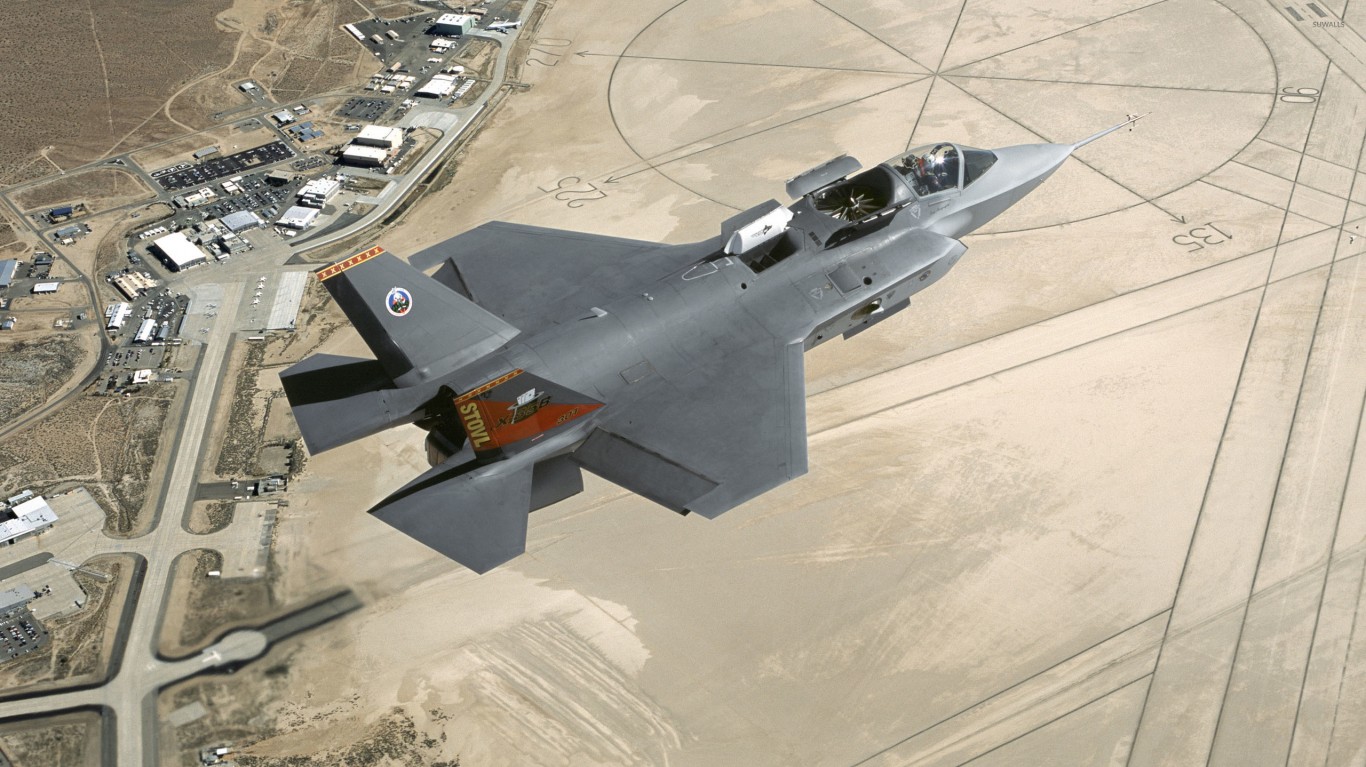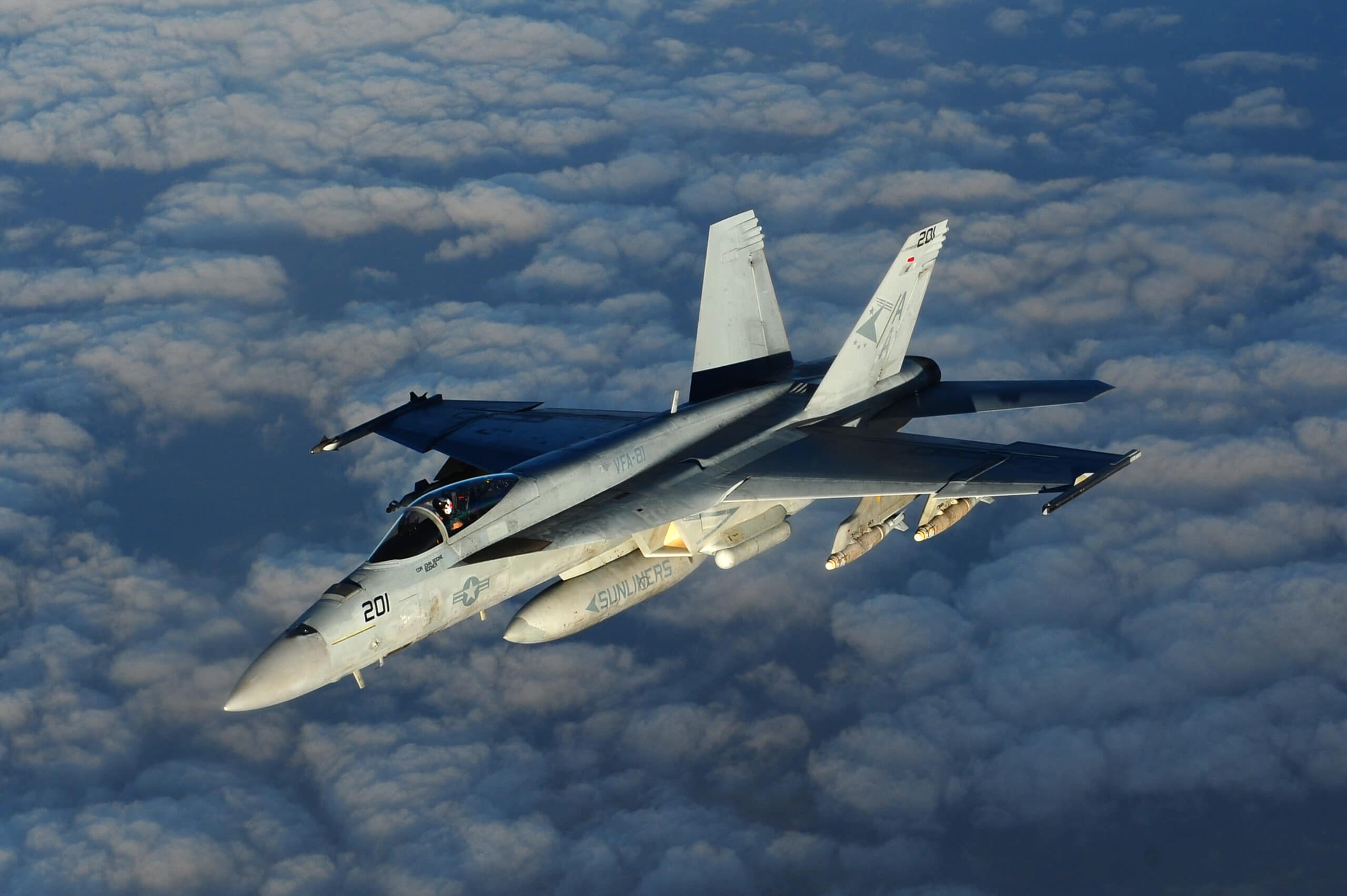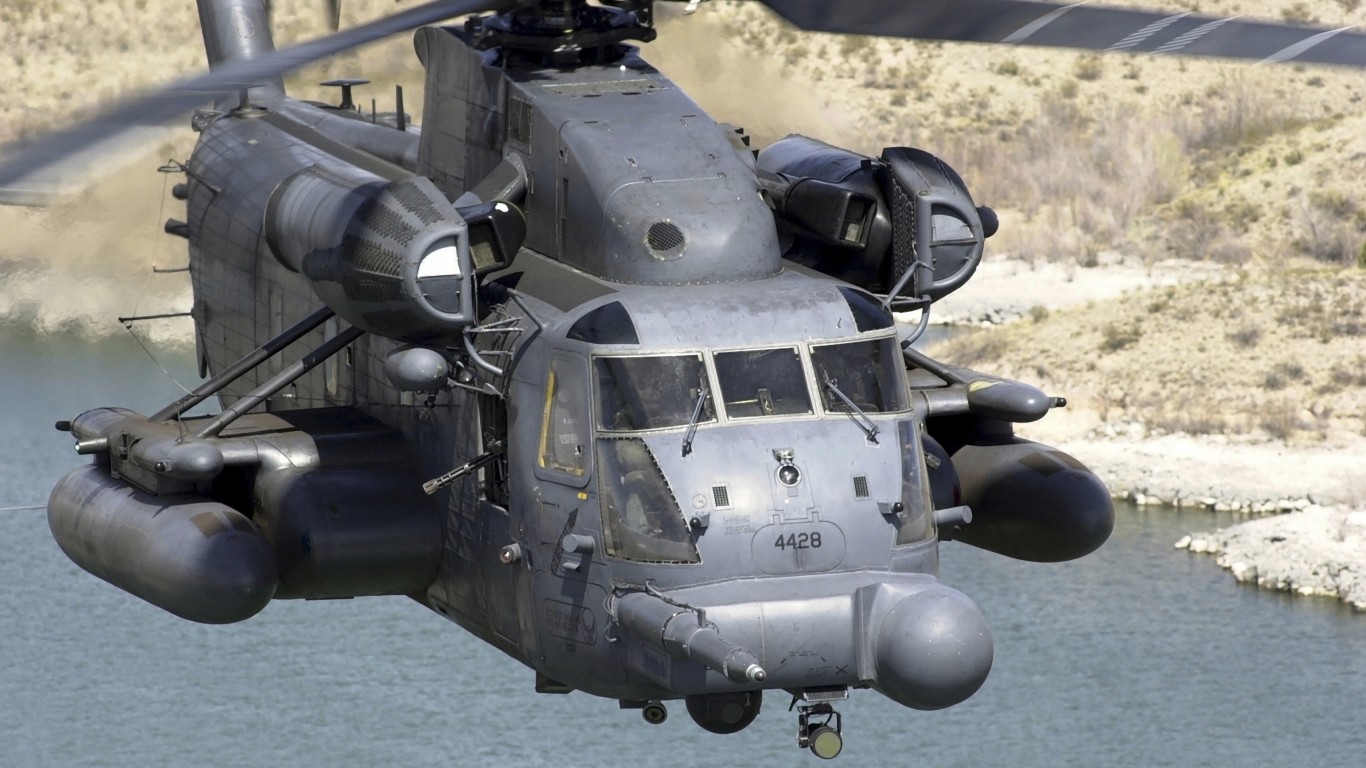Military
This Strike Fighter from the Late 1990s Is One of the Navy's Most Iconic Jets

Published:

24/7 Wall St. Insights:
The F/A-18 Super Hornet is one of the most iconic aircraft in the U.S. Navy’s arsenal. It is the most widely-flown fighter jet in the Navy with over 420 active aircraft at the ready. As such, the Super Hornet performs a wide range of missions, anything from air superiority and strike operations to reconnaissance and close air support. All of this has made the F/A-18 indispensable for carrier-based warfare. (The Super Hornet is the most heavily armed U.S. Navy aircraft.)
Introduced in 1999, this strike fighter is powered by two General Electric F414-GE-400 turbofan engines that can generate a combined 44,000 pounds of thrust. This configuration allows the Super Hornet to hit speeds up to Mach 1.6 (just under 1,200 mph).
Boeing designed these jets based on the original F/A-18 Hornet, but with advanced avionics and increased fuel capacity. The Super Hornet series is designed to carry an impressive array of weapons including Sidewinder missiles, AMRAAM missiles, Harpoon missiles, HARM missiles, Maverick missiles, and joint direct attack munitions. These also come standard with a 20mm M61A1 Vulcan automatic cannon.
The Super Hornet has seen action in conflicts around the world ranging from Operation Iraqi Freedom to more recent operations in Syria and Afghanistan. Typically, these missions involved long range strike operations or rapid deployment scenarios.
As the mainstay of the Navy’s carrier air wings, the F/A-18 Super Hornet has proven itself as one of the most iconic fighter jets in modern warfare. However, there are newer platforms in the works like the F-35C Lightning II that are currently being integrated to the Navy’s overall force. There are a number of other combat aircraft currently at the disposal of the U.S. Navy and 24/7 Wall St. is taking a closer look at these aircraft. (This is the newest and most advanced fighter jet to enter the U.S. Navy.)
To identify the combat aircraft flown by the U.S. Navy, 24/7 Wall St. reviewed data from the 2024 World Air Forces report from FlightGlobal, an aviation and aerospace industry website, and ranked the aircraft alphabetically. Additionally, we’ve included supplemental information on the type of aircraft, how many are in active service, and top speed. We have excluded all trainer aircraft.

Understanding the aircraft used by the U.S. Navy provides insight into joint military capabilities and defense strategies. Also knowing what the U.S. has in its arsenal further explains its military capabilities. This further gives context to the tactical flexibility and logistical reach the Navy brings in its operations. Lastly, the composition and technological level of the aircraft fleet highlight the Navy’s ability of maintaining dominance and its rapid response capabilities, both of these are key factors in its strategic defense planning.

The EA-18G Growler is a carrier-based electronic warfare aircraft that was introduced in 2009. Currently there are just over 150 of these aircraft in service. These jets can hit a top speed of 1,181 mph and can equip a wide array of weapons.
The Growler is not only equipped for combat but also for electronic warfare, some of this includes detection and jamming pods to disrupt enemy sensors and communications. It’s worth noting that these jets are a specialized variant of the F/A-18F Super Hornet.
These jets play an important role in protecting strike aircraft by preemptively jamming enemy radar and intercepting communications, clearing the path for less stealthy fighters.

The F-35 Lightning II is one of the newest additions to the U.S. Navy. As a fifth-generation strike fighter aircraft, the Lightning II can play a number of roles incorporating the newest stealth technology.
Introduced in 2016, the F-35A Lightning II boasts a top speed of 1,199 mph and can equip a wide variety of weapons. It is one of the newest fifth-generation aircraft to enter the service. Currently, there are 234 in active service for the U.S. Air Force but hundreds more are on order from Lockheed Martin for the U.S. military at large.

The F/A-18 Super Hornet was introduced in 1999 as a carrier-based strike fighter aircraft. There are currently over 400 of these aircraft in service of the U.S. Navy.
These jets are capable of reaching speeds up to 1,187 mph and are typically armed with a 20mm M61A1 Vulcan cannon and a variety of missiles and bombs, including Sidewinders, AMRAAMs, Harpoons, HARMs, Mavericks, as well as precision joint direct attack munitions and conventional bombs.
The Super Hornet is designed with a larger airframe, more advanced radar systems, and greater fuel capacity than its predecessor, the original F/A-18 Hornet. These upgrades significantly improve the Super Hornet’s range and endurance.

The MH-53E Pave Low, introduced in 1981, is a multi-role transport helicopter with 26 active aircraft in service. It can hit a top speed of 196 mph and is heavily armed with 7.62mm M134 miniguns and 12.7mm Browning M2 heavy machine guns. This helicopter is used for long-range insertion and extraction missions.
Known for its unique ability to take off and land vertically like a helicopter and then adjust its rotors to operate like a turboprop plane, the MV-22 Osprey is one of the more unique aircraft in the U.S. Air Force. It is manufactured by Bell Boeing and plays key roles in U.S. special operations missions like infiltration, extraction, and resupply. The U.S. Marine Corps uses this aircraft extensively for troop deployment and extraction, or even just for logistical purposes. The Osprey also can refuel mid-flight which significantly extends its range for longer missions.

The Black Hawk helicopter is by far one of the most iconic helicopters ever built. It is the workhorse of the U.S. military with over a few thousand units currently in service across all branches.
It features twin turboshaft engines, a single four-bladed main rotor, and a four-bladed tail rotor, which allow for top speeds over 180 mph. Typically, this helicopter carries a crew of two pilots and two crew chiefs and can transport up to 11 fully equipped soldiers. In total, the Black Hawk can carry a payload of roughly 9,000 pounds.
Black Hawk helicopters have played important roles in conflicts around the globe. One infamous instance was the conflict in Somalia in 1993, particularly the Battle of Mogadishu. The Black Hawk played a significant role in urban combat and casualty evacuation under intense fire. This story would go on to make it as a blockbuster movie famously titled “Black Hawk Down.”
Retirement planning doesn’t have to feel overwhelming. The key is finding expert guidance—and SmartAsset’s simple quiz makes it easier than ever for you to connect with a vetted financial advisor.
Here’s how it works:
Why wait? Start building the retirement you’ve always dreamed of. Click here to get started today!
Thank you for reading! Have some feedback for us?
Contact the 24/7 Wall St. editorial team.